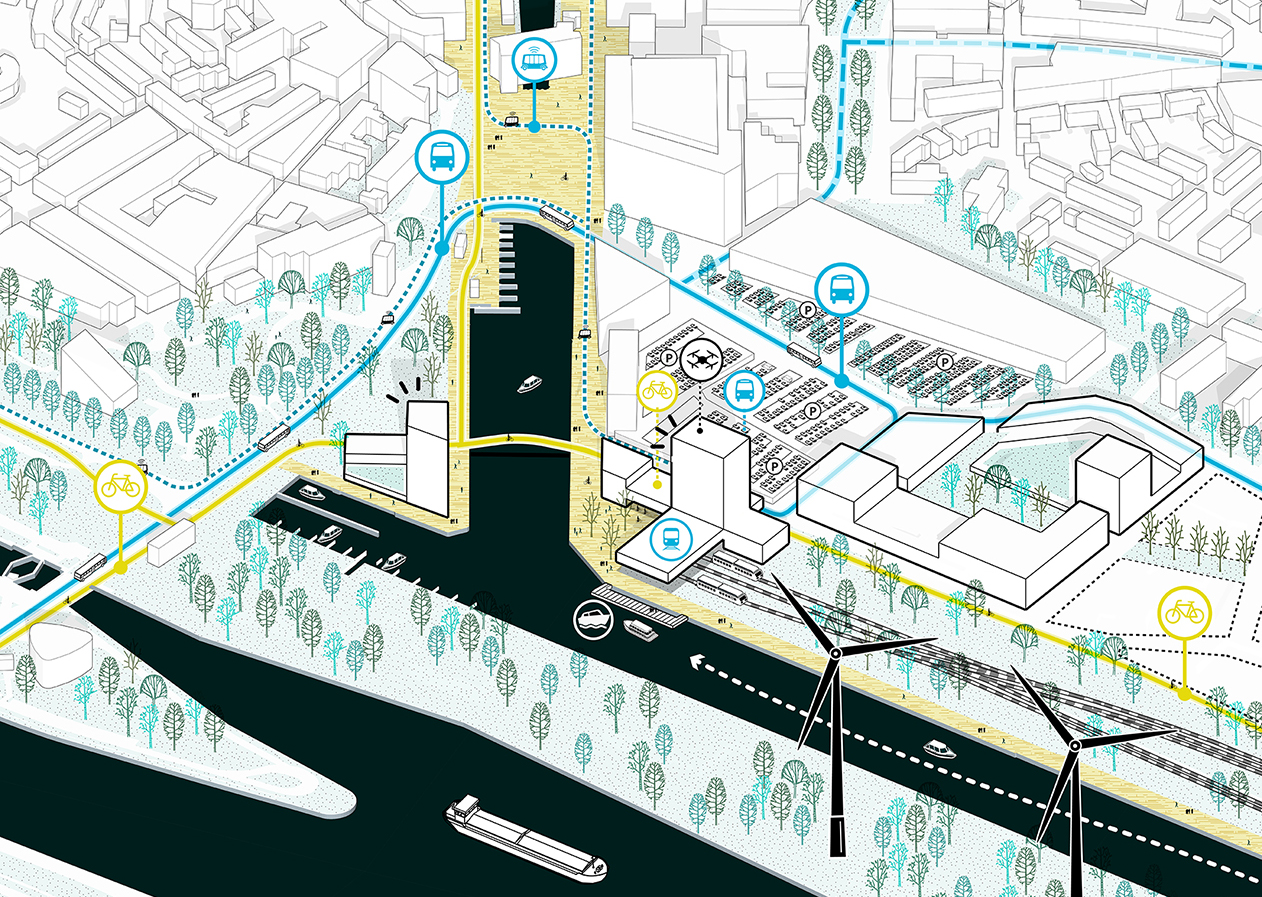Mobility transition
Due to the enormous growth in car and freight traffic, the focus is shifting ever further from human beings to vehicles. Circulation and traffic flow have become key concepts, which serve as a compass for the expansion of infrastructure. Even for the 95% of the time that cars are stationary, the necessary space must be provided, often not only at the residence, but also at work, the store, etc. At the same time, traffic jams are constantly increasing. The impact on the environment and the climate has become ever more perceptible. Moreover, in the meantime it is clear that technological improvements and cleaner vehicles, due to the constant increase in road traffic, have not led to fewer accidents, less noise pollution, cleaner air or less greenhouse gases.
Mobility is above all about people, experience and user-friendliness. It allows us to combine all kinds of activities, to discover new things and meet other people. In order to make our mobility system environmentally-friendly and climate-neutral by 2050, it is necessary – in addition to technological innovation – to also address the underlying spatial problems and bring about a modal shift where healthy, active and environmentally-friendly transport choices are the natural option.
“You don’t necessarily have to ban cars to create great places. But you do have to completely redefine the car’s role. You have to prioritize cars last and people first.” – Brent Todorian, city planner Vancouver, Canada
Integrated mobility solutions
For BUUR, mobility and space are inextricably interwoven. For many policy makers in Flanders, adapting the spatial and mobility policy feels like a ´mission impossible´. With the rise of technology, electric vehicles and shared mobility, the mobility world is in full transformation, but at the same time a pervasive feeling of powerlessness dominates and there is a fear that this will prevent our spatial planning and mobility from becoming fundamentally sustainable.
We see our focus on sustainable mobility essentially as a catalyst that can change this state of affairs. For us the objective is twofold. Firstly, to issue a ´wake-up call´ that clarifies and makes tangible the current and future challenges for policy makers and stakeholders. And secondly, we are working on plans and projects from a future-oriented and realistic vision, strategy and action program in order to tackle the roots of the problem.
We are working on integrated solutions for achieving behavioral change and we are developing sustainable and innovative mobility concepts that will help bring about the shift from car ownership to combined use. We are doing this together with governments, transport providers, companies and citizens. We put ourselves in the shoes of the user and the resident, and opt unreservedly for quality on a human scale.











